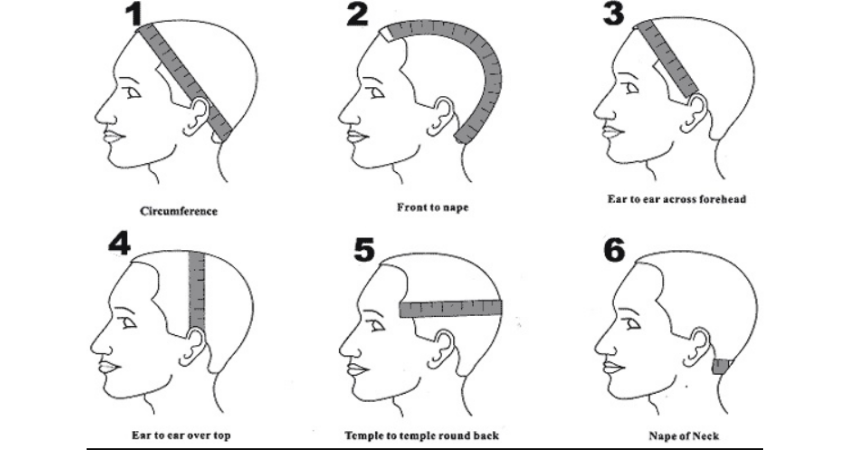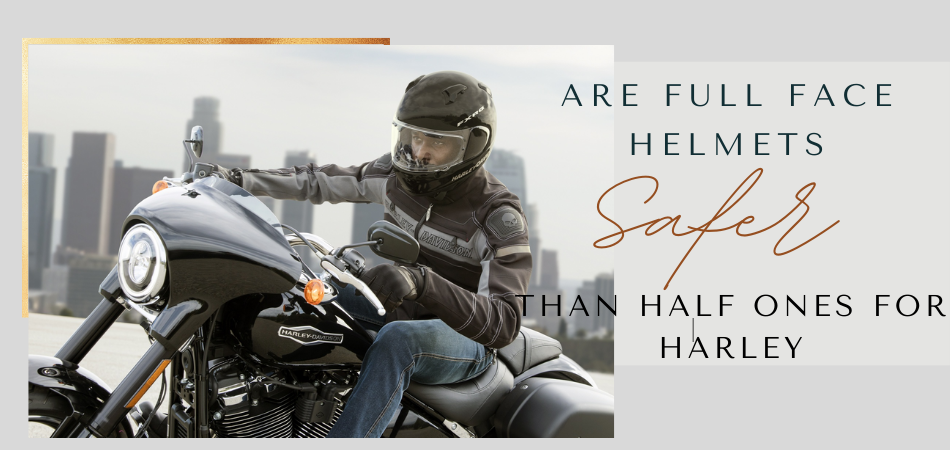A regular motorcycle rider should be familiar with the experience of distorted visions in rainy or foggy weather. Rainy or foggy weather can reduce the lifespan of a motorcycle helmet. So, the common question now is, how do you protect your helmet from the rain?
One way you can protect your motorcycle helmet from rain is by applying water-repellent spray on the helmet. You can also turn your head left or right while riding at high speeds to get the water away from your visor. Additionally, equipping with an adjustable visor will be more beneficial to keeping out rain from entering your helmet.
There are fail-proof guidelines to follow in this article. Following these guidelines will prevent such problems from occurring.
Are Motorcycle Helmets Waterproof?
When planning on getting motorcycle helmets for rain or fog, it is important to avoid cheap ones. Some people consider cheap helmets, believing they will meet their needs. This is not a wise move for a situation like this. Most motorcycle helmets are waterproof. But to prolong the lifespan of these waterproof helmets, there are certain steps to take.
Quality standard motorcycle helmets are the best options for rainy and foggy weather. Helmets that are not of good quality will not provide enough protection, such as you will need. Using cheap particle helmets will take away the clear vision a rider should get on a ride. In rough weather, dust particles in storms and water droplets from rain will cover the face of the helmets and obstruct a clear vision.
Why These Motorcycle Helmets Are Waterproof?
Motorcycle helmets comprise waterproof to maintain the safety of the rider. Good motorcycle helmets are best for rainy weather, as they create a wall between the rain and the visor. The wall contains substances that interact with the water-drops on the visor, just as oil would. Using these quality helmets is a surefire method to leave your visor dry, even in heavy rain.
Types of Waterproof Motorcycle Helmets
There are specific features a waterproof motorcycle helmet must possess. A typical waterproof motorcycle helmet must have these features:
- An adjustable visor.
- A water repellant visor.
- Seal to prevent noises and raindrops from rolling into the helmet.
- Full-faced to ensure total enclosure of the head.
Some examples of motorcycle helmets that can handle rainy weather include:
- FreedConn Motorcycle Helmet
- Yema YM-926 Motorbike Helmet
- 1Storm Motorcycle Full-face Helmet
- GDM DK-120
Is It Ok to Leave a Motorcycle Out in the Rain?
Leaving a motorcycle in the rain is ok, especially if it is the waterproof type. This is because, on a normal day, a motorbike can get wet while riding it or packed. But even though you can leave your motorcycle in the rain, excessive contact with water may damage them. Regular drivers can get caught in extreme weather. So, for them, it is inevitable.
How Do You Protect Your Helmet From the Rain?
The fundamental way to protect a motorcycle helmet from the rain is the application of a water repellant spray. It is risky to take a ride in the rain. This makes the use of protective gears necessary for a rainy day’s ride. Remember, when riding, maintaining a clear visor is one of the most significant things to do.
This is because most hazards happen unexpectedly, and we cannot avoid all of them. These hazards in the rain are the major reason people ask; how do you protect your helmet from the rain?
So, maintaining the good condition of gear will prolong its life and also prolong that of its owner. When we talk about gear, we refer to the most important piece, which is the helmet and its visor. Here are some tips for keeping a clear visor when the need arises.
Keeping a Clean Visor
On a rainy day’s ride, keeping a clean visor is vital for maximum safety. Taking a ride in the rain builds up rainwater around the visor. And rainwater usually carries grime and dirt that affects visibility. In a situation like this, many riders may attempt to raise their visors or clean them.
The idea of cleaning will cause distraction and reduce the possibility of safety on the ride. Raising the visor will attract steam to build upon it, which makes both ideas not ideal. The ideal action to take is to get a cleaning kit for visors and give it a one-time clean-up when it is necessary.
Application of Water Repellant Spray
After achieving a clean visor, the next step is to pick up a water repellant spray from the several options obtainable. Using this substance on visors provides a reliable solution.
Products from the Nikwax brand acts by creating a barrier between raindrops and the visor. The presence of the water repellant spray causes water droplets to roll away easily off the face of the visor. This result is like that of the head turn.
One limitation of this method is the need to reapply after every cleaning session of the visor. Reapplying is always necessary, even if the visor isn’t cleaned.
Squeegee Motorcycle Gloves
Having a pair of winter gloves means having gloves with an in-built squeegee. The squeegee is a little strip made of rubber. It is usually placed along the side of the left index finger or thumb.
One might ask why it is placed on the left. The reason is to maintain the throttle input while wiping the visor at once. Although this method is smart, it has a drawback, which is covering the view of the rider for a few seconds to clean the visor.
This method is not considered illegal, but in dangerous situations, this can be distracting and dangerous to the rider. Always ensure an empty road and pick the moments for this act wisely.
Head Turn
Although this method is quite easier than the ones stated above, it is a surefire solution that will not fail; it is fail-proof and very effective. This method is done by simply turning to face the left or right at any speed higher than 25 mph or close. Doing this will blow away the raindrops from the face of the visor.
The only obvious drawback to this method is the fact that, for a moment, the rider’s eyes will be off the road. This is almost similar to the previous method, and with similar precaution, always check to be sure of the situation ahead before making this move.
Potato Method
If there is still the presence of uncertainty about which method to choose, introducing a curveball into the mix will probably change some things. If the rider is stuck in heavy rain with only a motorcycle and a potato, this method will work well in such a situation.
Cutting the potato in two and applying a side of it against the visor will act as a minor-effective water repellant. The thin film it will create on the visor will be the wall between the rain and the visor. But we will always recommend purchasing a water repellant spray instead.
How Do You Wear a Helmet in the Rain?
To wear a helmet in the rain means to be sure of the perfect helmet size and how it sits on the head. Buying the right size of a helmet is the first thing to consider in this aspect. Despite the development in present-day motorcycle helmets, it would be of no use if the helmet didn’t fit well on the head.
How a helmet fits on the head is not science, but making it sit properly is quite necessary. Following this guideline will ensure wearing the perfect helmet for the next road trip in the rain.
Head Measurement
With an inch of space from your eyebrows, roll a tape horizontally around your head. After this measurement, go through a helmet fitment chart to know the helmet size closest to your head. If your head fits in-between two sizes, we recommend getting the smaller size.
Try the Helmet on
The construction of the present-day motorcycle helmets should prevent the noise of the wind. To wear these helmets, you would have to force open the chin straps so that your head can fit into the helmet. In order not to tear them, you only need to pull the chinstraps, not the covers.
The Larger Part of the Head Goes in First
It is easier to pull the helmet on from behind the head than try to do the same from over the forehead. The helmet that was considered too small will just fit on perfectly if pulled from the larger side of the head.
The first few times of wearing a new helmet will feel tight. But with continuous wearing, it loosens up and fits better on the head. To be sure, the helmet is the right one for you. Answer these questions;
- How snuggly does the helmet fit on your head?
- Does the top pad of the helmet press closely above your head
- Do you feel the cheek pads on your cheeks?
- How does the brow lining fit on your brow?
Your fingers should be able to go between your brows and the lining. To be sure of this, the foam at the back and top should be hard to compress. The reason this is important is that over time, the foam will compress.
Carry Out These Checks
- To ensure the helmet doesn’t move or slide on your head, pull it up and down and side to side.
- Tighten the chinstrap and attempt to pull off the helmet by rotating it forward from behind
- Try to push off the helmet by placing your hand beneath the chin guard and rotating it to the backside.
If the helmet doesn’t come off after all these attempts, then you just found a helmet perfect for you.
Do Not Be in a Hurry
Wear the helmet in the shop. This is to ensure it does not become uncomfortable for you with time.
Final Thoughts
Like lubricating and cleaning the chain of a motorcycle, it is a continual process to keep the raindrops away from the helmet’s visor. Finding a waterproof motorcycle helmet is workable, but how do you protect your helmet from the rain? This question is necessary for preserving the lifespan of a helmet.
Using a quality waterproof helmet is the best option for a rainy ride, as it will keep the visor of your helmet clear throughout the ride. But try to apply at least one guideline we have recommended in this article to have a safe ride if you constantly find yourself in the rain.










